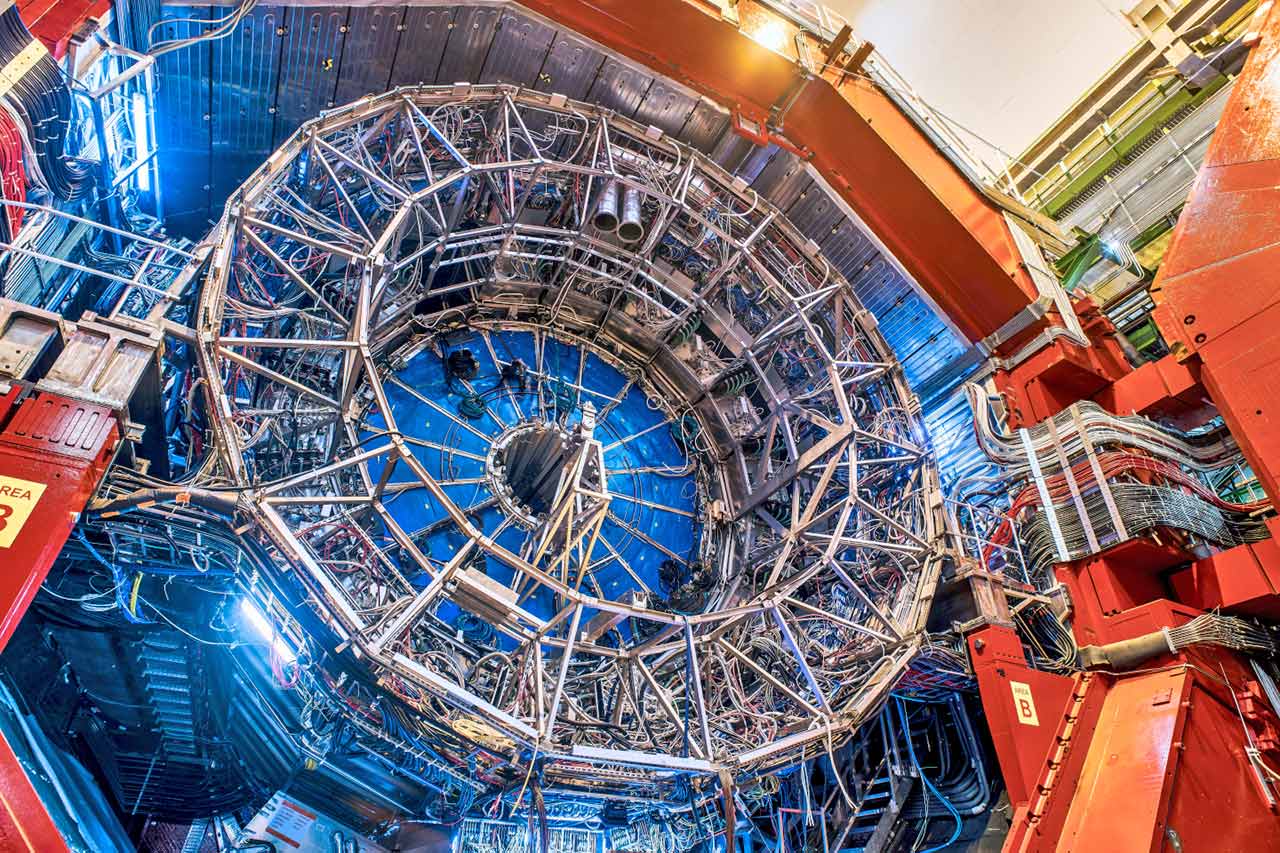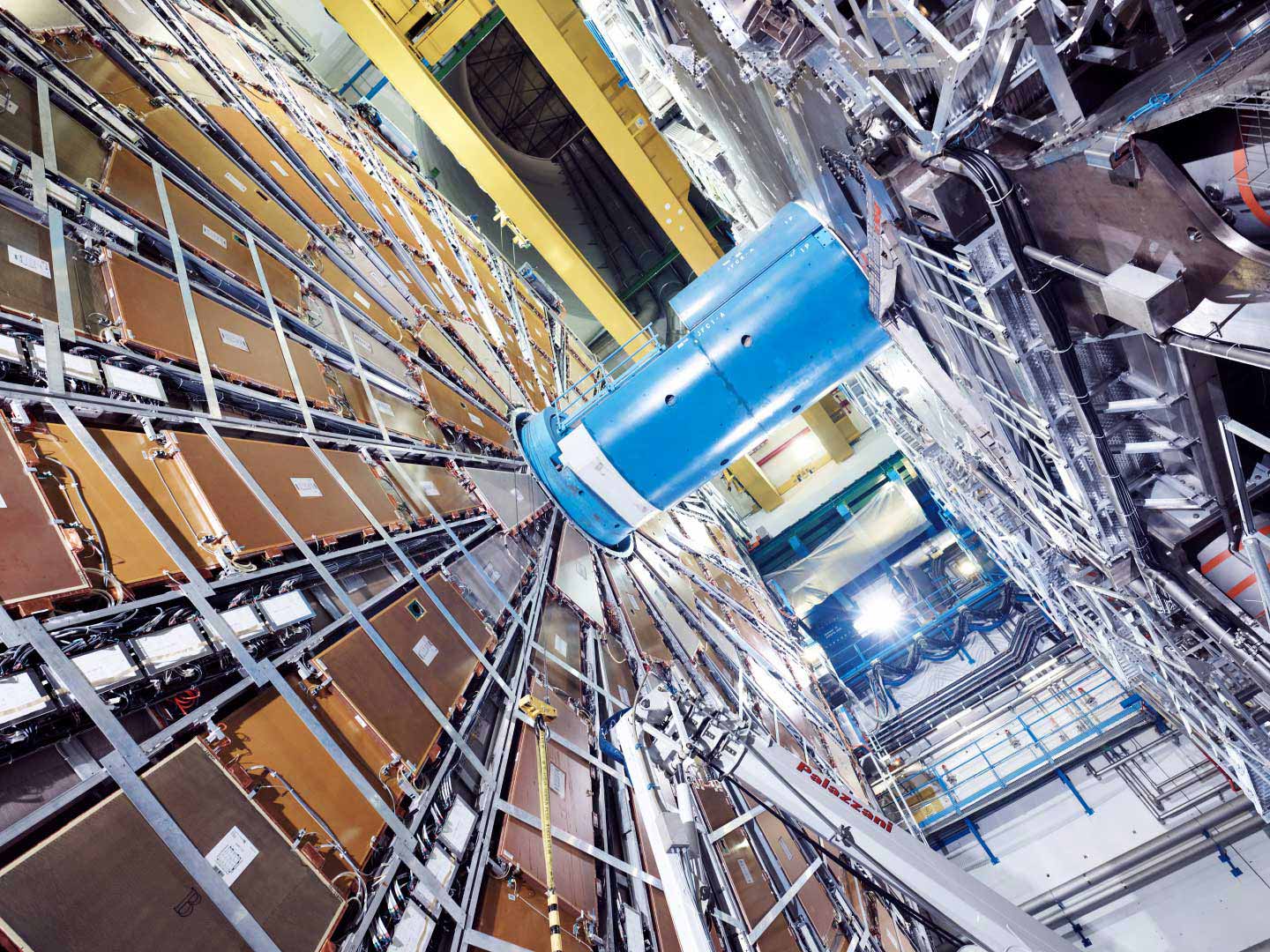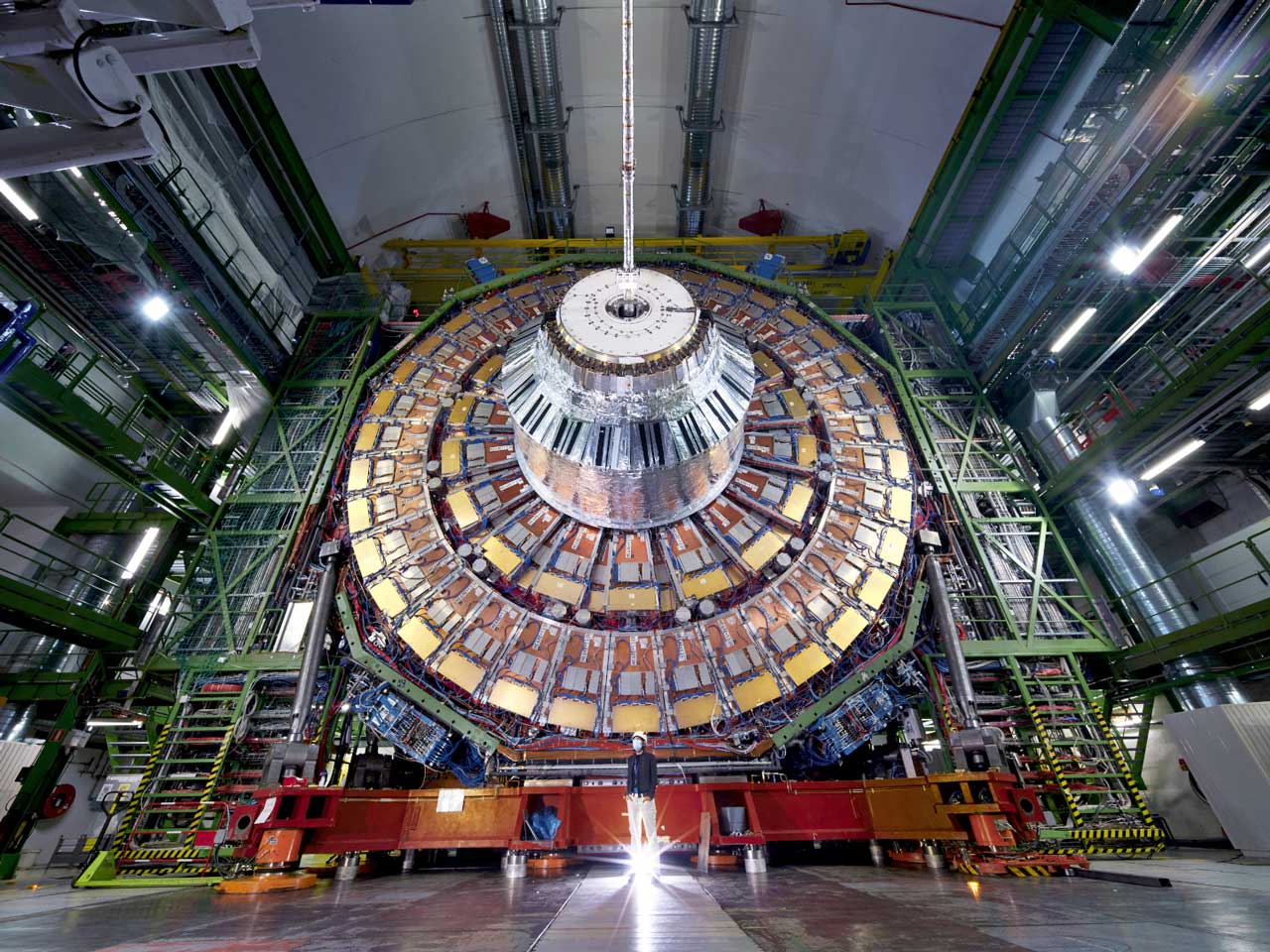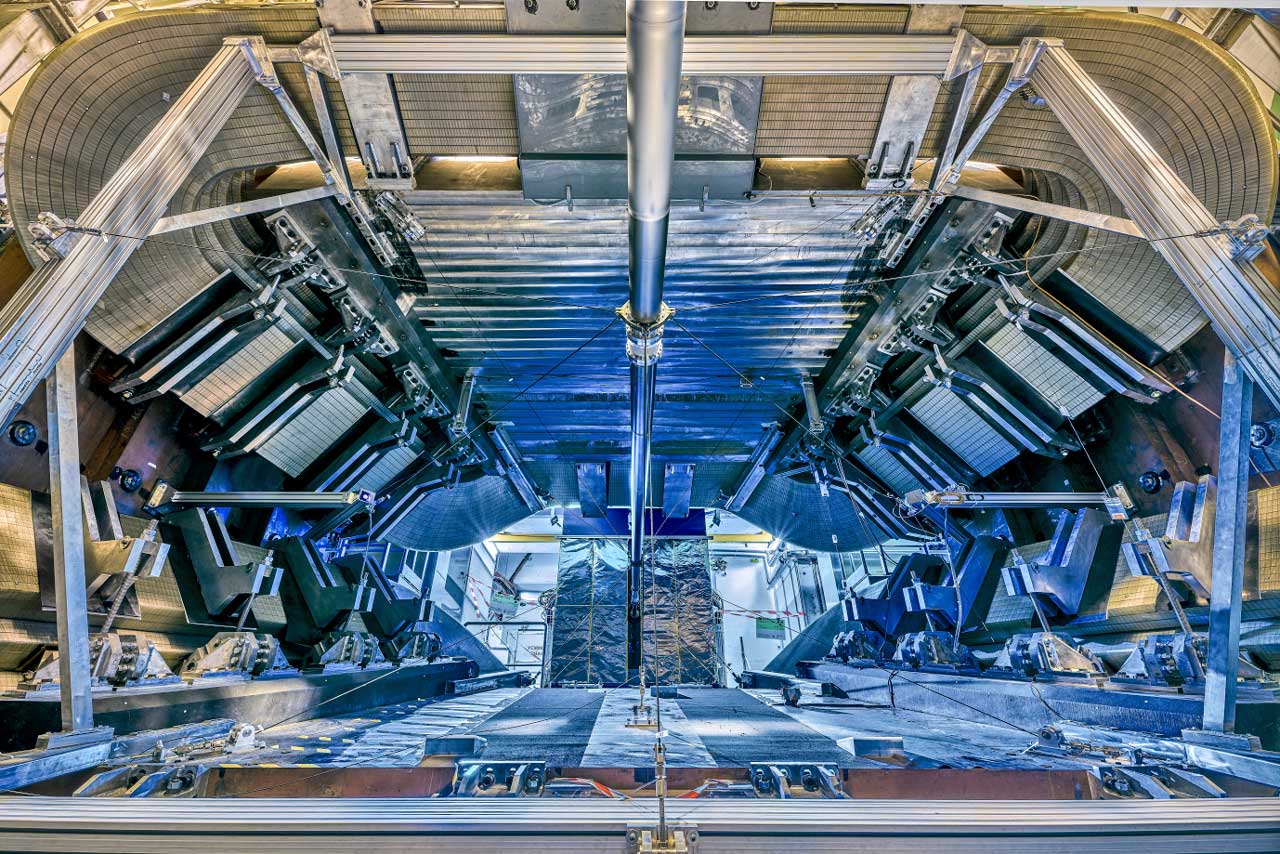The Physics Behind the Smallest Particles
The Big Bang almost fourteen billion years ago marked the birth of space, time and matter. The universe has been expanding ever since. Yet how did things unfold in the first moments after the Big Bang? Which elementary building blocks make up our world? And what forces of nature are at play?
Unique experiments are being carried out at CERN (Conseil Européen pour la Recherche Nucléaire), the European research center for particle physics near Geneva, to answer these and other fundamental questions. More than 1,300 scientists from 29 German universities and non-university research institutions are contributing significantly to the investigations being conducted there.

The Particle Accelerator
Spanning almost 27 kilometers in circumference, the Large Hadron Collider accelerates protons or heavy atomic nuclei to almost the speed of light. The bunches of particles orbit clockwise and anti-clockwise at high energy and collide with each other head-on at various points in the ring. Up to 3000 bunches of particles, each with a maximum of 100 billion particles, are on a collision course in the LHC ring in an effort to maximize the probability of collision. Record energies of up to 13.6 teraelectronvolts can be achieved during these collisions. As a result, up to 1.5 billion collisions take place per second. This high number of collisions is what is needed to produce the very rare particles and processes that researchers are particularly interested in. The LHC therefore runs around the clock during normal operation in order to maximize the number of collisions.
The Four Major Experiments
The four experiments ALICE, ATLAS, CMS and LHCb are enormous, highly complex particle detectors capable of recording the tracks of collisions up to 40 million times per second. Complex computer systems and software algorithms are used to reconstruct the signals from the detectors for collision events and the vast amounts of data are analyzed using cutting edge statistical methods and artificial intelligence processes. The findings obtained in this way are then compared with theoretical predictions. Conclusions about the interactions and properties of the elementary particles involved in the collisions can be derived from this comparison.
Current Research Issues
Scientists have managed to establish one of the most successful theories in the natural sciences over the past few decades with the standard model of elementary particle physics. This model is capable of precisely describing the properties of particles and their interactions, thereby providing the foundation for a deeper understanding of the development of the universe from the Big Bang to the present day.
The four LHC experiments in recent years have tested the predictions of the standard model with increasing precision and in doing so, have also identified processes that were previously completely unknown. In spite of these extensive successes, researchers have not yet succeeded in describing the universe in its entirety and many enigmas remain unsolved.
The Higgs particle was detected in 2012 by the ATLAS and CMS experiments. The Higgs is closely linked to the origin of the masses of elementary particles according to the theory of the standard model. It is of immense importance for our understanding of the universe to measure its properties and therefore an important research goal for scientists.
Only around five per cent of the universe is made up of known matter. The majority of the universe is filled with the mysterious dark matter and dark energy. So far, very little is known about either.
Given our current state of understanding, matter and antimatter should have been created in equal parts during the Big Bang. Our world, however, is made up only of matter. Why is there this imbalance between matter and antimatter?

Germany and CERN – A Long-standing Partnership
The European Laboratory for Particle Physics, CERN, is a prime example of international scientific collaboration. More than 17,000 researchers and employees from all over the world take part in realizing the highly ambitious large-scale research projects conducted there. Experimental and theoretical particle physicists from Germany have been involved in shaping this unique research center and its state-of-the-art equipment since CERN was founded in 1954. The German groups from the four ErUM Research Priority Programs not only make important contributions to scientific knowledge, but also play a key role in the following areas:
- Construction and further development of the detector components
- Conducting and analyzing experiments
- Taking on leadership responsibility within the LHC collaborations
- Development of software for data analysis and theoretical calculations
Key Figures of the German Research Groups at the LHC
Locations Involved
More than 1300 scientists from 23 funded universities and 6 associated research institutions of the Helmholtz Association of German Research Centers (HGF) and the Max Planck Society are currently involved in the ErUM FSPs at the LHC.
Clicking on one of the four experiment names activates or deactivates the locations involved in the map.
The Future of the LHC: Soon to Be Even More Powerful
The results of the Large Hadron Collider (LHC) have made it possible to complete and refine the standard model of particle physics. Many questions remain unanswered, however. To get closer to answering these questions, the LHC along with its four detectors will be fundamentally modernized in a multi-year upgrade phase starting in 2026. The so-called High-Luminosity LHC will significantly increase the potential for exciting discoveries.
In view of the long planning and development times involved, the scientists at the ErUM FSPs began working on these upgrade projects many years ago. The new detectors are being developed, built, tested at German university institutes and research facilities together with international partners and finally installed at the LHC with funding from the BMBF. Measurements are to be carried out following this upgrade until at least 2037.
More About the High-Lumi LHC










